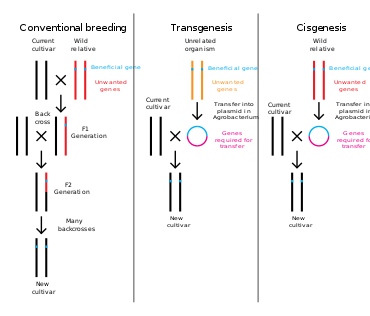Facts for Kids
Genetic engineering is the modification and manipulation of an organism's genes using technology to help improve health, agriculture, and many other fields.
Overview
Gene Therapy
CRISPR Technology
Ethical Considerations
Regulations And Safety
Public Perception And Debate
History Of Genetic Engineering
Future Prospects And Innovations
Genetic Engineering In Agriculture
Applications Of Genetic Engineering
Techniques Used In Genetic Engineering

Inside this Article
European Union
Stanley Cohen
Interference
Gene Therapy
Technology
Production
Population
Organism
Medicine
Society
Cloning
Did you know?
🌱 Genetic engineering allows scientists to change an organism's genes to help it grow better.
🏥 This science has helped create important medicines, like insulin for people with diabetes.
🦠 The first major genetic engineering event happened in 1973 when scientists modified bacteria.
🍅 In 1994, the first genetically engineered food, a tomato, was created to last longer.
🔬 One method of genetic engineering is called 'gene cloning,' which makes copies of a specific gene.
✂️ CRISPR is a popular gene editing tool that makes precise changes to genes.
🩺 Gene therapy is a medical application of genetic engineering that helps fix faulty genes.
🌾 Genetic engineering increases food production by creating crops that resist pests and diseases.
🚜 Some genetically modified crops can withstand herbicides, making farming easier.
⚖️ Ethical discussions about genetic engineering help ensure that it's used responsibly.
Introduction
By using special tools and techniques, they can add, delete, or change these instructions. This science helps us with many things, like making plants stronger or creating medicines for diseases. 🏥
Imagine building with Legos; each piece is like a gene, and genetic engineering lets you change the design! Many plants, animals, and even tiny bacteria have been genetically engineered to help people in different ways. 🌍
Isn't that amazing?
Gene Therapy
For example, children with severe combined immunodeficiency (SCID), also known as "bubble boy syndrome," can often be helped with gene therapy. 🤗
Scientists take healthy copies of the gene and put them into patients, helping their immune systems work better! Research in gene therapy continues to grow, and new treatments are being explored for conditions like cystic fibrosis and muscular dystrophy.
Crispr Technology
CRISPR works like a pair of guided scissors, cutting out or adding pieces of DNA to change how an organism functions. For example, scientists are exploring ways to use CRISPR to help crops grow better in droughts or pests. 🌻
This technology has made gene editing faster and cheaper, sparking new research and discoveries in many fields, including medicine and agriculture. 🚀
It’s a game-changer!
Ethical Considerations
️ Scientists and society discuss important questions, such as whether it's fair to change nature. Some people worry it might harm animals or plants. 🐒
Others are concerned about long-term effects that we might not see right away. Many scientists believe it’s important to think carefully and act responsibly. They follow guidelines to ensure safety and protect the environment! 🌳
Open conversation helps everyone understand the benefits and risks of genetic engineering.
Regulations And Safety
️ These rules help keep people, animals, and the environment safe. For example, in the United States, the Food and Drug Administration (FDA) checks new genetically engineered foods before they are sold. 🥦
In Europe, the European Union has strict rules that require labeling of genetically modified foods. 📜
These regulations help ensure that everyone knows what they are eating and that the food is safe! Following these rules helps scientists make smart choices.
Public Perception And Debate
️ Some people are excited about its potential, while others are worried about its safety and effects on the environment. 🌍
In schools, people learn both the benefits and risks. Many support research because it can create new medicines or better food. However, others wish to limit its use, believing nature should be preserved without human interference. It’s important to share ideas and ask questions! Engaging in open discussions helps everyone learn and decide what's best for our world. 💭
History Of Genetic Engineering
This was like opening a treasure chest of possibilities! Over the years, more discoveries followed. In 1994, scientists created the first genetically engineered food, a tomato that could last longer! 🍅
Since then, many plants and animals have been genetically engineered to help farmers and doctors.
Future Prospects And Innovations
Scientists are working on ways to create "designer" organisms that can solve problems, like cleaning up pollution or generating clean energy. 🌎
They may also develop treatments for currently untouchable diseases. Moreover, advancements in CRISPR and other techniques are happening quickly. 🌟
Future innovations could lead to better food production and even help endangered species survive. Collaboration between scientists, lawmakers, and the community is essential to ensure responsible advancements for everyone!
Genetic Engineering In Agriculture
Scientists create crops that are resistant to pests and diseases, meaning farmers can use fewer chemicals! For example, “Roundup Ready” soybeans can tolerate certain herbicides, allowing farmers to control weeds better. 🚜
Some rice varieties have been genetically modified to grow in salty soils, helping farmers in tough climates. 🌊
These modifications help increase food supply, which is important as the world’s population grows! Farmers around the globe are using these advancements to feed more people.
Applications Of Genetic Engineering
In agriculture, it increases food production and improves plants to resist pests or grow in tough climates. 🍏
For example, scientists developed “Bt cotton,” which is resistant to certain insects. Animals can also be genetically engineered for better growth or health. 🐄
Overall, genetic engineering is like using science to get bigger, stronger, healthier results!
Techniques Used In Genetic Engineering
Another method is "gene editing," which is like using scissors to cut and paste genes. The most popular gene editing tool is CRISPR, a technology that makes very precise changes. ✂
️ Scientists use these methods to ensure the new genes work well and do what we want them to do. Learning how to do this carefully is very important!

